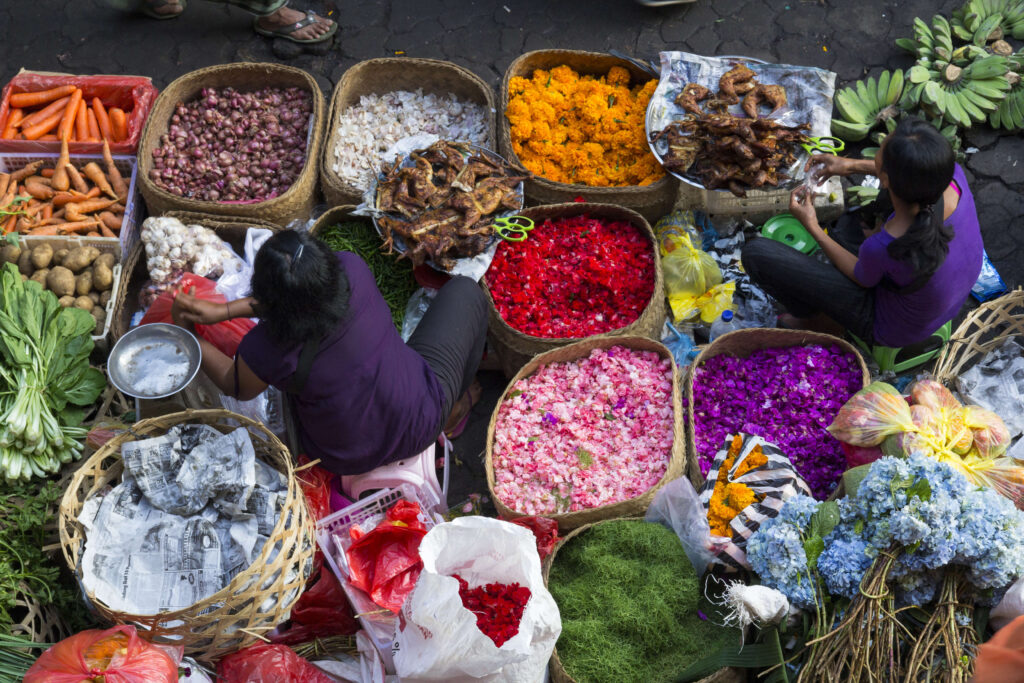
Topics
Micro, small, and medium enterprises (MSMEs) in Indonesia are suffering in the wake of COVID-19 according to data collected by CFI. Seventeen percent of the businesses in the sample have closed, and 85 percent of those that continue to operate estimate their profits have decreased, often by 50 percent or more.
Owners of the MSMEs that were operating at the time of the survey remained optimistic despite the economic downturn. Almost two-thirds reported they were covering their business expenses with revenue and thought they could keep their doors open for another three months based on how things were going. In addition to altering their business practices to stay open, the data on owners’ use of financial tools suggests that they are drawing down their financial resources, raising concerns that they have little cushion for the months ahead.
From July 13 to August 8, 2020, CFI conducted phone interviews with a random sample of Bina Artha Ventura (BAV) clients in Indonesia. BAV, which is participating in Accion’s partnership with Mastercard, is a microfinance institution that uses a group lending methodology to serve entrepreneurs, mostly women, who predominantly live in rural areas. CFI completed 730 interviews, 660 of which were with female MSME owners. Two-thirds of the owners ran sole proprietorships while 31 percent ran microenterprises (one to 10 employees). Those microbusinesses employed an average of three people before the pandemic. MSMEs in the sample have been operating for almost eight years on average. Most businesses were grocery or food stands, although farming and the sale of household goods were also common. This is one of six surveys CFI is conducting in Indonesia as part of its ongoing effort to study the impact of COVID-19 on the financial health of MSMEs. As with data from CFI’s first survey in Nigeria, the data from this survey is presented in this interactive dashboard.
Nearly one in five women-led businesses have closed. They were almost twice as likely to close as male-led businesses.
Of the women-led microbusinesses that closed, 78 percent said they were completely confident that they would reopen in the future, but only 57 percent of the women-led sole proprietorships that closed said the same.
Since COVID-19 struck Indonesia, 18 percent of women-led businesses in the sample have closed. These closures have proportionally impacted businesses of different types and sizes, and they have been driven largely by a drop in customer demand, likely the result of restrictions on movement being enforced in the country. The owners of these businesses were generally confident that they would be able to restart their business in the future, but there were major differences based on how large the businesses were prior to the pandemic. Of the women-led microbusinesses that closed, 78 percent said they were completely confident that they would reopen in the future, but only 57 percent of the women-led sole proprietorships that closed said the same. Importantly, women-led businesses were almost twice as likely to close as male-led businesses. Of the 70 male-led businesses in the sample, only 10 percent had shuttered their operations.
COVID-19 has led to dramatic declines in profits, but roughly two-thirds of businesses say they are covering their expenses.
70 percent of operating businesses reported a decrease in profits of 50 percent or more.
Businesses generally did well in the year before the pandemic struck. Fifty-six percent of respondents reported their profits increased compared to the year before while 38 percent said they had stayed the same. Only 5 percent of people said their profits had declined, but that number has skyrocketed since COVID-19: 85 percent of businesses reported that their profits have declined compared to pre-pandemic levels. Those declines have been dramatic, with 70 percent of operating businesses reporting a decrease in profits of 50 percent or more. While profit levels shrunk dramatically, owners were confident that they would be resilient to this shock. Sixty-three percent of owners said they were covering their expenses just with business revenue and think they could continue operating for at least three months based on how things were going.
MSMEs are trying to survive by changing business practices to boost revenue and cut costs, including reducing their labor force.
Half of operating microenterprises reported that they cut employees.
MSME owners are employing a mix of revenue-boosting and cost-cutting measures to ensure their revenues continue covering their expenses. For instance, a third of all operating businesses reported offering discounts to stimulate sales while a fifth chose to raise prices instead. Almost a fifth of businesses started a delivery service since the pandemic began. Cost-cutting measures were also common. For those businesses with employees, reducing the size of their workforce and work hours for staff was an important strategy. Half of operating microenterprises reported that they cut employees, leading to a 42 percent reduction in employment within this segment. This action likely had downstream effects. Many owners reported that they were working longer hours to meet customer demand or make ends meet, potentially a result of a reduced workforce.
In addition to their businesses, owners’ households are enduring, but data on financial tools suggests their margin of error is small.
Three-quarters of households reported that they were covering all their expenses with non-debt income sources. Severe food insecurity – defined as people going to bed hungry because of a lack of money – was relatively low at 10 percent. In comparison, CFI’s survey of urban MSME owners in Lagos, Nigeria found that 34 percent of owners reported severe food insecurity in their households.
While this is encouraging, a closer look at the financial tools owners are using to cope with the crisis suggests that conditions are likely to worsen. For example, 22 percent of owners sold a household asset to keep their business running. Of the households that sold an asset, only 63 percent reported being able to cover their expenses compared to 79 percent who did not sell an asset. Similarly, 47 percent of MSME owners reported skipping a loan payment, and those owners were less likely to have covered their household expenses by a similar margin compared to those who had made their payments.
Savings also appears to have collapsed in the months since the pandemic hit.
Savings also appears to have collapsed in the months since the pandemic hit. Since March, only 38 percent of people reported saving while 53 percent reported withdrawing money from savings. In the year prior to the pandemic, 84 percent of people reported saving compared to 54 percent who said they withdrew money. While the comparison is not one-to-one because of the different periods, it is certainly not encouraging, especially because savings is another indicator of households’ ability to cope. Ninety percent of owners who had saved since March reported being able to cover their household expenses compared to only 67 percent of owners who had not saved.
Collectively, this analysis implies respondents have dwindling financial options. Only so many assets can be sold, and savings will dry up if not replenished. Debts not repaid choke future lines of credit. These underlying patterns may help to explain a less optimistic sentiment shared by respondents: 79 percent said they could only cover their essentials for a month or less if their income sources dried up.
Summary and Reflections
Since the pandemic reached Indonesia in March, 17 percent of businesses have closed, profits have collapsed, and employment has plummeted. Women-owned businesses have been hit especially hard, with 18 percent of them closing compared to only 10 percent of male-owned businesses. Owners who managed to keep their business open reported a high degree of confidence in their ability to continue operating, relying on a mix of revenue-boosting and cost-cutting business practices to ensure their revenues continue to at least meet their expenses. This has helped stave off catastrophe at home, where food insecurity remains low and people continue to cover their household expenses.
However, data on the use of financial tools suggests owners and their households have little margin for error in the months ahead. Selling household assets, skipping loan payments, and net savings withdrawal activity indicate that respondents are already relying heavily on financial tools to meet their basic needs. Without a change in their circumstances, it is unlikely that MSME owners will be able to replenish these resources. Thus, it is reasonable to expect a worsening financial situation in the months ahead.
This survey is part of our partnership with Mastercard Center for Inclusive Growth to understand the impact of COVID-19 on MSMEs.










